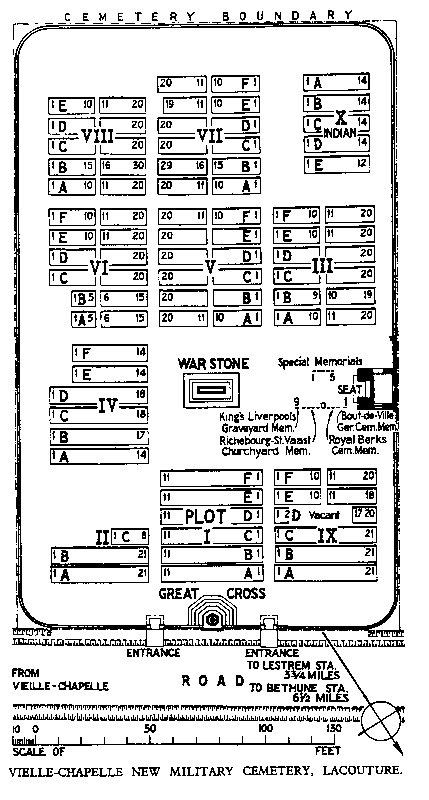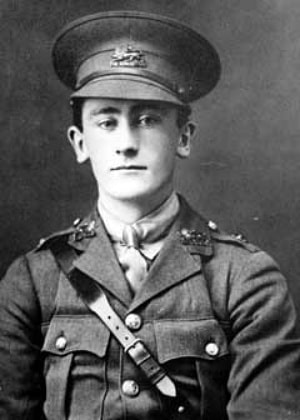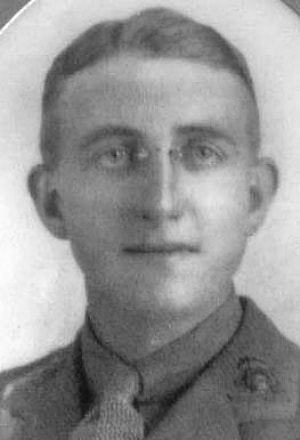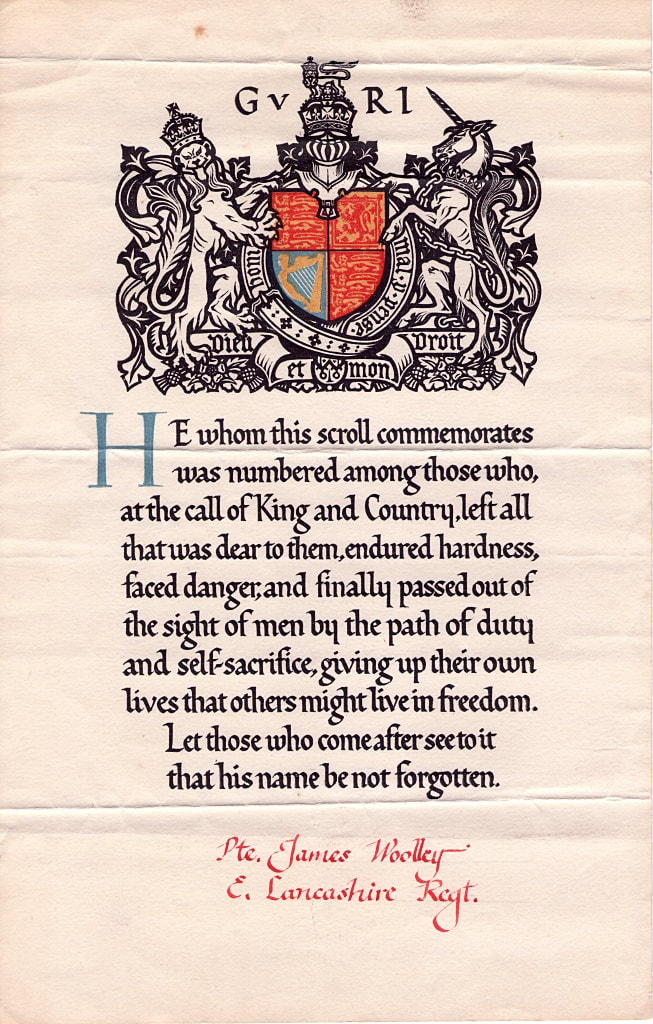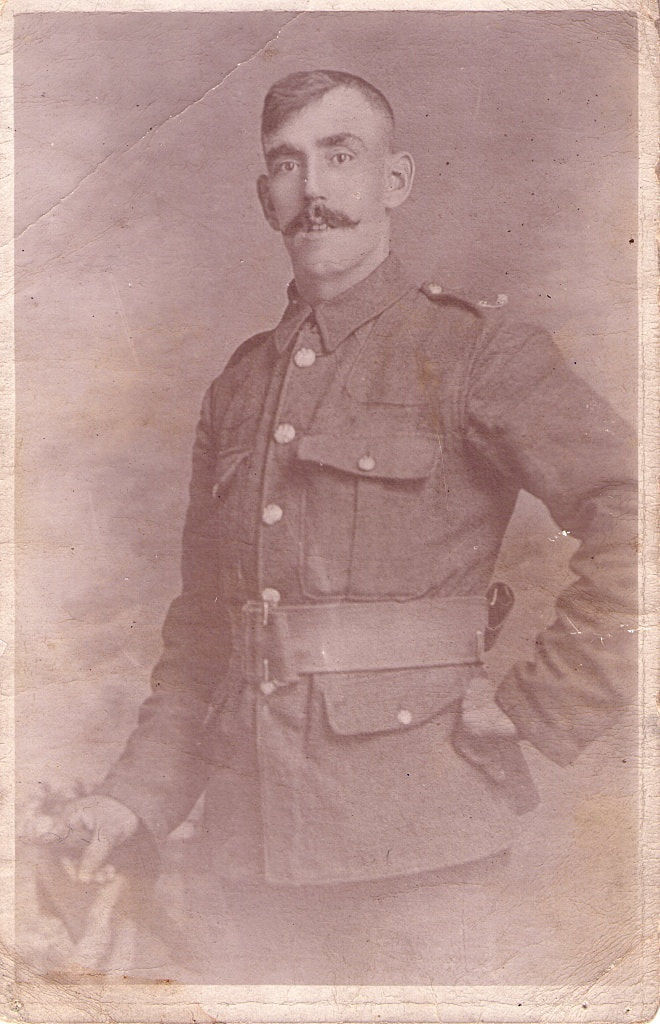VIEILLE-CHAPELLE NEW MILITARY CEMETERY
Lacouture
Pas De Calais
France
GPS Coordinates: Latitude: 50.59201, Longitude: 2.69682
Location Information
Vieille-Chapelle is a village north east of Bethune. From Bethune follow the D945 to Estaires for approximately 10 kilometres. Take the right turn onto the small road signposted to Vieille-Chapelle opposite Zelobes Indian Cemetery. Follow this small road and on entering Vieille-Chapelle village, the Vieille-Chapelle New Military Cemetery lies on the right hand side of the road.
Historical Information
The Old Military Cemetery (now removed) was closed in November 1915, as being too near the school; and the New Military Cemetery was begun in that month and used by fighting units and Field Ambulances until March 1918. The village and the cemetery fell into German hands in the following month, in the Battles of the Lys; but in September 1918, on the German retirement, some further burials took place. These original graves are in Plot I and Plot IV, Rows A and B.
The remainder of the cemetery was made after the Armistice, by the concentration of British, Indian and Portuguese graves from the neighbouring battlefields and from other cemeteries; but the Portuguese graves were removed to Richebourg-L'Avoue Portuguese National Cemetery in 1925, and three German prisoners graves have also been removed.
The following were among the burial grounds from which graves were taken to this cemetery:-
BOUT-DE-VILLE GERMAN CEMETERY, RICHEBOURG-ST. VAAST, 19 kilometres North-East of Vieille-Chapelle, where five soldiers from the United Kingdom were buried by the enemy in April 1918 and 28 by their comrades in September and October 1918.
KING's LIVERPOOLS GRAVEYARD, CUINCHY, situated among houses on the West side of the Festubert-Cambrin road, opposite Givenchy. It contained the graves of 170 soldiers from the United Kingdom and one from Canada, almost all of whom fell in 1915 or 1918; it was begun by the 1st King's in February 1915, and used by the 55th Division in April 1918.
LOCON OLD MILITARY CEMETERY, 228 metres East of the village, used in June 1915 and containing the graves of ten soldiers from the United Kingdom.
LOCON NEW MILITARY CEMETERY, begun by the 38th (Welch) Division in September 1915 and used in 1916 and 1918; it contained the graves of 30 soldiers from the United Kingdom, and it was 365 metres West of the village on the road to Merville.
RICHEBOURG-ST. VAAST CHURCHYARD, where four soldiers from the United Kingdom were buried in 1915.
ROUGE-CROIX, RICHEBOURG-ST. VAAST, a hamlet at the crossing of the Rue-du-Bacquerot and the Estaires-La Bassee road. Here were buried 24 men of the 2nd East Lancs, who fell on the 14th March 1915, and two unknown gunners.
ROYAL BERKS CEMETERY, CUINCHY, 182 metres South-West of Cuinchy Church. Here were buried, in 1915, 53 soldiers from the United Kingdom, of whom 34 belonged to the 1st Royal Berks, and one German prisoner in 1917.
There are now 991, Commonwealth1914-18 war casualties commemorated in this site, of these 345 are unidentified. Almost all fell in 1914, 1915 or 1918, and most of those who fell in 1918 belonged to the 55th (West Lancashire) Division. There are special memorials erected to five soldiers from the United Kingdom, believed to be buried among them. Other special memorials record the names of nine soldiers from the United Kingdom, buried in other cemeteries, whose graves were destroyed by shell fire.
The cemetery covers an area of 4,111 square metres and is enclosed by a stone rubble wall.
The village was later "adopted" by the Metropolitan Borough of Paddington. The Communal Cemetery contains a memorial to the 1st King Edward's Horse, who defended the village in April 1918.
Total Burials: 994.
Identified Commonwealth Casualties: United Kingdom 617, India 28, Canada 1. Total 646.
Unidentified Commonwealth Casualties: United Kingdom 301, India 44. Total 345.
The cemetery was designed by Sir Herbert Baker and Noel Ackroyd Rew
Second Lieutenant Joseph Henry Collin, V. C.
4th Bn. King's Own (Royal Lancaster Regiment)
killed in action on 9th April1918, aged 24.
Plot III. A. 11.
Son of Joseph and Mary Collin, of 8, Petteril Terrace, Harraby, Carlisle.
His headstone bears the inscription "Of Your Charity Pray For His Soul R. I. P."
Citation:
An extract from "The London Gazette," dated 25th June, 1918, records the following:- "For most conspicuous bravery, devotion to duty and self-sacrifice in action. After offering a long and gallant resistance against heavy odds in the Keep held by his platoon, this officer, with only five of his men remaining, slowly withdrew in the face of superior numbers, contesting every inch of the ground. The enemy were pressing him hard with bombs and machine-gun fire from close range. Single-handed 2nd Lt. Collin attacked the machine gun and team. After firing his revolver into the enemy, he seized a Mills grenade and threw it into the hostile team, putting the gun out of action, killing four of the team and wounding two others. Observing a second hostile machine gun firing, he took a Lewis gun, and selecting a high point of vantage on the parapet whence he could engage the gun, he, unaided, kept the enemy at bay until he fell mortally wounded. The heroic self-sacrifice of 2nd Lt. Collin was a magnificent example to all."
Second Lieutenant John Schofield, V. C.
2nd/5th Bn. Lancashire Fusiliers
died of wounds 9th April 1918, aged 26.
Plot III. C. 8.
Son of John and Martha Schofield, of Sunny Bank House, Tower, Coniston (formerly of 16, Wycollar Rd., Blackburn, Lancs). Born at Blackburn.
Citation: An extract from "The London Gazette," dated 25th June, 1918, records the following:-"For most conspicuous bravery and devotion to duty in operations. 2nd Lt. Schofield led a party of nine men against a strong point which was reported strongly held by the enemy, and was attacked by about 100 of the enemy with bombs. He disposed his men so skilfully, and made such good use of rifle and Lewis gun fire, that the enemy took cover in dug-outs. This officer himself then held up and captured a party of twenty. With the help of other parties this position was then cleared of the enemy who were all killed or captured. He then collected the remainder of his men, made his party up to ten, and proceeded towards the front line, previously informing his Commanding Officer as to the position, and that he was proceeding to retake the front line. He met large numbers of the enemy in a communication trench in front of him and in a drain on his right and left. His party opened rapid rifle fire, and he climbed out on to the parapet under point blank machine gun fire, and, by his fearless demeanour and bravery, forced the enemy to surrender. As a result, 123 of the enemy, including several officers, were captured by 2nd Lt. Schofield and his party. This very gallant officer was killed a few minutes later."
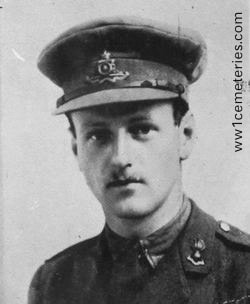
Lieutenant
John Isabel Adam
"A" Battery, 307th BrigadeRoyal Field Artillery
10th May 1918, aged 29.
Plot VIII. E. 1.
Son of John Isabel Adam and Harriet S. Adam, of The Seven Sisters Ellesmere, Salop.
His headstone bears the inscription "Joy Cometh In The Morning"
John Isabel Adam
"A" Battery, 307th BrigadeRoyal Field Artillery
10th May 1918, aged 29.
Plot VIII. E. 1.
Son of John Isabel Adam and Harriet S. Adam, of The Seven Sisters Ellesmere, Salop.
His headstone bears the inscription "Joy Cometh In The Morning"

Major
Gerald Wilson Bentley
4th Bn. Middlesex Regiment
12th October 1914, aged 35.
Plot VI. A. 9.
Son of Lt. Col. Alfred Wilson Bentley and Catherine Edith Bentley, of The Grove, Monken, Hadley, Barnet.
Gerald Wilson Bentley
4th Bn. Middlesex Regiment
12th October 1914, aged 35.
Plot VI. A. 9.
Son of Lt. Col. Alfred Wilson Bentley and Catherine Edith Bentley, of The Grove, Monken, Hadley, Barnet.
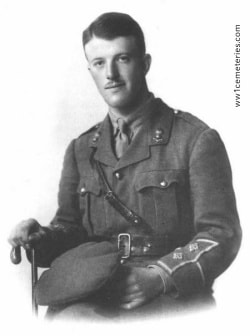
Lieutenant
Cyril Edward Felix Bevir
76th Brigade, Royal Field Artillery
29th September 1915, aged 24.
Plot VIII. E. 16.
Son of Joseph Louis and Alice Sophie Bevir of Mickleton House, Mickleton, Glos.
Cyril Edward Felix Bevir
76th Brigade, Royal Field Artillery
29th September 1915, aged 24.
Plot VIII. E. 16.
Son of Joseph Louis and Alice Sophie Bevir of Mickleton House, Mickleton, Glos.
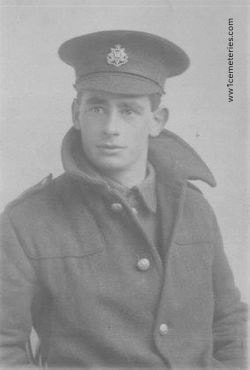
3101 Private
Frederick Henry Elliott
"A" Company, 1st/23rd Bn. London Regiment
20th May 1915, aged 20.
Plot II. A. 11.
Son of Frederick Thomas and Louisa Mary Elliott, of 133, St. James' Rd., Upper Tooting, London.
His headstone bears the inscription "Well Done Faithful Unto Death"
Frederick Henry Elliott
"A" Company, 1st/23rd Bn. London Regiment
20th May 1915, aged 20.
Plot II. A. 11.
Son of Frederick Thomas and Louisa Mary Elliott, of 133, St. James' Rd., Upper Tooting, London.
His headstone bears the inscription "Well Done Faithful Unto Death"
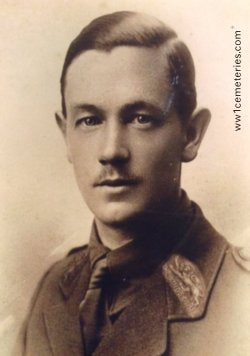
Second Lieutenant
Bert Harold Gough
4th Bn. King's Own (Royal Lancaster Regiment)
9th April 1918, aged 25.
Plot III. A. 17.
Son of Lucy Gough, of 17, Persehouse St., Walsall, and the late Arthur Gough.
His headstone bears the inscription "He Died The Noblest Death A Man May Die"
Bert Harold Gough
4th Bn. King's Own (Royal Lancaster Regiment)
9th April 1918, aged 25.
Plot III. A. 17.
Son of Lucy Gough, of 17, Persehouse St., Walsall, and the late Arthur Gough.
His headstone bears the inscription "He Died The Noblest Death A Man May Die"

6261 Private
George Hitchen
2nd Bn. East Lancashire Regiment
14th March 1915, aged 36.
Plot VII. B. 10.
Son of George and Eliza Hitchen, of Clitheroe; husband of May Alice Hitchen, of 8, Whalley Rd., Clitheroe, Lancs.
His headstone bears the inscription "To Memory Ever Dear"
George Hitchen
2nd Bn. East Lancashire Regiment
14th March 1915, aged 36.
Plot VII. B. 10.
Son of George and Eliza Hitchen, of Clitheroe; husband of May Alice Hitchen, of 8, Whalley Rd., Clitheroe, Lancs.
His headstone bears the inscription "To Memory Ever Dear"
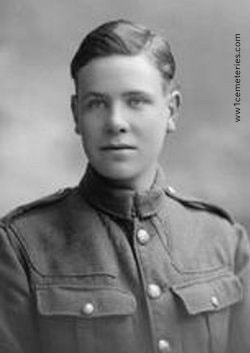
43259 Private
Edward Alfred Joshua Hunt
13th Bn. Duke of Wellington's (West Riding Regiment)
25th September 1918, aged 19.
Plot V. E. 3.
Son of Alfred Walter and Annie Hunt, of " Rothesay," 79, Church Rd., Manor Park, Essex.
His headstone bears the inscription "Father In Thy Gracious Keeping Leave We Now Thy Servant Sleeping"
Edward Alfred Joshua Hunt
13th Bn. Duke of Wellington's (West Riding Regiment)
25th September 1918, aged 19.
Plot V. E. 3.
Son of Alfred Walter and Annie Hunt, of " Rothesay," 79, Church Rd., Manor Park, Essex.
His headstone bears the inscription "Father In Thy Gracious Keeping Leave We Now Thy Servant Sleeping"
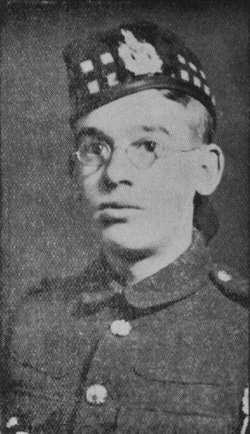
8085 Private
Robert Scott
4th Bn. King's Own Scottish Borderers transferred to (233408) 220th Employment Coy. Labour Corps
19th September 1918.
Plot VII. C. 20.
Robert Scott
4th Bn. King's Own Scottish Borderers transferred to (233408) 220th Employment Coy. Labour Corps
19th September 1918.
Plot VII. C. 20.
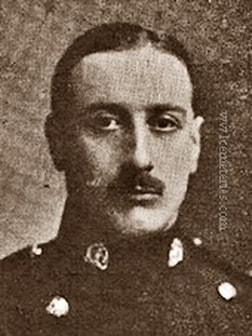
Lieutenant
Claude Davis Sneath
4th Bn. Middlesex Regiment
14th October 1914, aged 25.
Plot VI. A. 8.
Son of George and Marian E. H. Sneath, of Gloucester Lodge, Golders Green Rd., Hendon, Middlesex.
His headstone bears the inscription "For King And Country"
Claude Davis Sneath
4th Bn. Middlesex Regiment
14th October 1914, aged 25.
Plot VI. A. 8.
Son of George and Marian E. H. Sneath, of Gloucester Lodge, Golders Green Rd., Hendon, Middlesex.
His headstone bears the inscription "For King And Country"
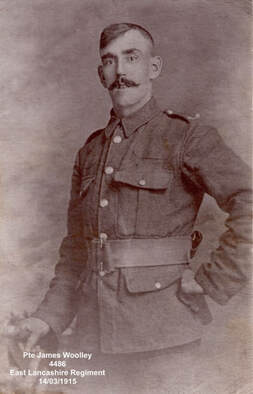
4486 Private
James Woolley
2nd Bn. East Lancashire Regiment
14th March 1915, aged 29.
Plot VII. B. 12.
Husband of Isabella Brown (formerly Woolley), of 13, Isherwood, Darwen.
His headstone bears the inscription "At Rest"
Click on image to enlarge
Images courtesy of John Shorrock (Great Grandson)
James Woolley
2nd Bn. East Lancashire Regiment
14th March 1915, aged 29.
Plot VII. B. 12.
Husband of Isabella Brown (formerly Woolley), of 13, Isherwood, Darwen.
His headstone bears the inscription "At Rest"
Click on image to enlarge
Images courtesy of John Shorrock (Great Grandson)
Shot at Dawn
18/313 Private Herbert Crimmins, 18th Bn. West Yorkshire Regiment (Prince of Wales's Own), executed for desertion, 5th September 1916, aged 32. Plot V. F. 9 .
18/356 Private Arthur Wild, 18th Bn. West Yorkshire Regiment (Prince of Wales's Own) , executed for desertion 5th September 1916, aged 24. Plot V. F. 6. Son of Thomas Wild, of Bradford.
Privates Crimmins & Wild were among the earliest recruits to have enlisted with the 2nd Bradford Pals. Wild was a former police officer. From late March to mid-June 1916, the battalion served in the trenches on the Somme, & prepared for the new offensive. This was postponed for 48 hours, & meanwhile a midnight raid was made on the German trenches — which resulted in heavy casualties. On the eve of battle, Crummins & Wild, under orders to parade for duty as ration carriers at 1745, took took the opportunity to get very drunk at the local estaminet & strolled away some 3-4 miles after it closed — & fell asleep in a cornfield. Thus missing the evening parade, they made no attempt to rejoin their battalion, spending the night in a billet at Beauquesne.
They surrendered to the RMP at a checkpoint in Vignacourt on July 4, admitting their absence & volunteering the exact time & date of their departure from the battalion. Neither had his rifle or equipment with him. Once back with their comrades at the battalion — which meanwhile had suffered severe casualties on 1 July — they remained in billets until the battalion took its place in the trenches at Neuve Chapelle on 27 July. Even now, no disciplinary action had been taken, another Bradford Pal later stating that they laughed off their wandering away.
However they were brought to court martial on 21 Aug, tried separately but by the same panel. Neither man contested the evidence — which was identical in each case.
Crimmins mentioned the afternoon’s drinking, followed by sleep in the cornfield, adding that they had gone to Vignacourt to seek advice from Wild’s brother; &, on failing to find him, gave themselves up. He denied any intention to desert, saying that he was very sorry; & related that his father had been in the Army for 27 years, & that he had 5 brothers serving abroad. Evidence was adduced of his good character: ‘a good soldier….who had always worked well on a recent tour in the trenches’.
Wild claimed to have suffered from shell-shock, saying that he had been severely shaken by the detonation of German mortar-fire, the MO telling him that he would be better in a few days. Other witnesses supported his account with further detail of this incident (in early June 1916): Wild was taken out with shell-shock; & on a later occasion had been so severely affected by shelling that he was sent back to camp. When cross-examined, Wild had admitted that he had not returned to camp when waking in the cornfield because he was frightened of the consequences of his absence, & thought that he would not be able to stand the noise of the guns.
Following the convictions of both men, Crimmins was recommended to mercy on account of ‘his exceptionally good character’,& Wild likewise on account of his nervous condition arising from the occasion in June 1916.
However the CO said of Crimmins that from a fighting point of view ‘his character was indifferent’; that he was a weak man led away by Wild; but nonetheless the crime was deliberate as he had shown himself to be of a nervous disposition when in the trenches. As for Wild, the CO said that he was lazy, someone who needed driving, & that ‘the case of shell-shock……was not serious as I happened to be in the front-line trenches myself at the time’. All the other formation commanders concurred in the death sentences, which Haig confirmed on 1 Sept 1916. (Putkowski, pp.108-11; Corns, pp.253-256)
7595 Private James A. Haddock, 12th Bn. Yorks & Lancs Regiment, executed for desertion, 16th September 1916, aged 32. Plot VI. F. 5. Son of Edwin Haddock, of 21, Ranskill Rd., Tinsley Park, Sheffield.
A Regular who had gone to France on 9 September 1914, he deserted on the way to the trenches, being found 5 days later some miles away, trying to hide himself. At the time, Haddock was serving under a suspended sentence of 20 years’ Penal Servitude imposed for an earlier offence of desertion. (Putkowski,p 114)
18/313 Private Herbert Crimmins, 18th Bn. West Yorkshire Regiment (Prince of Wales's Own), executed for desertion, 5th September 1916, aged 32. Plot V. F. 9 .
18/356 Private Arthur Wild, 18th Bn. West Yorkshire Regiment (Prince of Wales's Own) , executed for desertion 5th September 1916, aged 24. Plot V. F. 6. Son of Thomas Wild, of Bradford.
Privates Crimmins & Wild were among the earliest recruits to have enlisted with the 2nd Bradford Pals. Wild was a former police officer. From late March to mid-June 1916, the battalion served in the trenches on the Somme, & prepared for the new offensive. This was postponed for 48 hours, & meanwhile a midnight raid was made on the German trenches — which resulted in heavy casualties. On the eve of battle, Crummins & Wild, under orders to parade for duty as ration carriers at 1745, took took the opportunity to get very drunk at the local estaminet & strolled away some 3-4 miles after it closed — & fell asleep in a cornfield. Thus missing the evening parade, they made no attempt to rejoin their battalion, spending the night in a billet at Beauquesne.
They surrendered to the RMP at a checkpoint in Vignacourt on July 4, admitting their absence & volunteering the exact time & date of their departure from the battalion. Neither had his rifle or equipment with him. Once back with their comrades at the battalion — which meanwhile had suffered severe casualties on 1 July — they remained in billets until the battalion took its place in the trenches at Neuve Chapelle on 27 July. Even now, no disciplinary action had been taken, another Bradford Pal later stating that they laughed off their wandering away.
However they were brought to court martial on 21 Aug, tried separately but by the same panel. Neither man contested the evidence — which was identical in each case.
Crimmins mentioned the afternoon’s drinking, followed by sleep in the cornfield, adding that they had gone to Vignacourt to seek advice from Wild’s brother; &, on failing to find him, gave themselves up. He denied any intention to desert, saying that he was very sorry; & related that his father had been in the Army for 27 years, & that he had 5 brothers serving abroad. Evidence was adduced of his good character: ‘a good soldier….who had always worked well on a recent tour in the trenches’.
Wild claimed to have suffered from shell-shock, saying that he had been severely shaken by the detonation of German mortar-fire, the MO telling him that he would be better in a few days. Other witnesses supported his account with further detail of this incident (in early June 1916): Wild was taken out with shell-shock; & on a later occasion had been so severely affected by shelling that he was sent back to camp. When cross-examined, Wild had admitted that he had not returned to camp when waking in the cornfield because he was frightened of the consequences of his absence, & thought that he would not be able to stand the noise of the guns.
Following the convictions of both men, Crimmins was recommended to mercy on account of ‘his exceptionally good character’,& Wild likewise on account of his nervous condition arising from the occasion in June 1916.
However the CO said of Crimmins that from a fighting point of view ‘his character was indifferent’; that he was a weak man led away by Wild; but nonetheless the crime was deliberate as he had shown himself to be of a nervous disposition when in the trenches. As for Wild, the CO said that he was lazy, someone who needed driving, & that ‘the case of shell-shock……was not serious as I happened to be in the front-line trenches myself at the time’. All the other formation commanders concurred in the death sentences, which Haig confirmed on 1 Sept 1916. (Putkowski, pp.108-11; Corns, pp.253-256)
7595 Private James A. Haddock, 12th Bn. Yorks & Lancs Regiment, executed for desertion, 16th September 1916, aged 32. Plot VI. F. 5. Son of Edwin Haddock, of 21, Ranskill Rd., Tinsley Park, Sheffield.
A Regular who had gone to France on 9 September 1914, he deserted on the way to the trenches, being found 5 days later some miles away, trying to hide himself. At the time, Haddock was serving under a suspended sentence of 20 years’ Penal Servitude imposed for an earlier offence of desertion. (Putkowski,p 114)



















